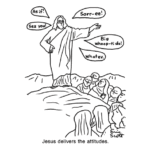Table of Contents
Introduction
For decades, comic strips have been a staple of newspapers and an important part of daily life. Among these cherished comics is “Curtis,” a humorous and heartwarming strip that stands out for its relatable characters and captivating storytelling. Created by Ray Billingsley in 1988, “Curtis” brings readers into the life of a young boy and his family as they navigate everyday challenges with humor and insight. In this article, we will explore the charm of “Curtis,” its themes, and how it continues to resonate with readers today.
A Comic for the Ages: The Birth of Curtis
The creation of “Curtis” marked a significant moment in comic strip history. Launched in 1988, the comic strip immediately gained popularity due to its refreshing take on urban family life. Ray Billingsley, the mastermind behind “Curtis,” sought to create a comic that was not only entertaining but also reflective of the real-life experiences of African American families. The comic features Curtis Wilkins, an 11-year-old boy living with his family in a New York City neighborhood. His day-to-day adventures are funny, meaningful, and often carry deeper social commentary.
Billingsley’s storytelling style is simple yet rich with emotion and insight. Through Curtis’s eyes, readers witness the ups and downs of growing up. This portrayal makes “Curtis” unique, as it blends humor with real-life situations in a way that resonates with a diverse audience. Over the years, “Curtis” has become a beloved part of many readers’ morning routines, continuing to thrive even as the newspaper industry evolves.
Characters That Captivate: Curtis and His World
The heart of any comic strip lies in its characters, and “Curtis” offers an unforgettable cast. Curtis Wilkins, the titular character, is a spirited and often mischievous young boy with a love for hip-hop and a flair for causing chaos. His relationship with his younger brother, Barry, is central to the comic’s humor. Like many sibling relationships, it is a mix of rivalry, teasing, and undeniable love. Their interactions are both funny and relatable, showcasing the typical sibling dynamic that many readers recognize in their own lives.
Curtis’s parents, Greg and Diane, are integral to the comic’s narrative. Greg, the father, is a stern but loving figure who works hard to support his family. His frequent arguments with Curtis over smoking and discipline are a recurring theme, adding depth and humor to the comic. Diane, Curtis’s mother, brings a sense of warmth and balance to the family dynamic. She plays the peacemaker and offers the wisdom only a mother can provide.
Beyond Curtis’s family, other notable characters include Curtis’s friends and schoolmates, such as Gunk, the quintessential nerd who adds to the comic’s humor with his quirky personality. Michelle, Curtis’s crush, provides a lighthearted romantic subplot that further enriches the storytelling. These characters are crucial in shaping Curtis’s experiences and adventures, making each comic strip a snapshot of urban youth life.
Themes of Family and Friendship
“Family and friendship” are recurring themes that give “Curtis” its emotional core. The relationship between Curtis and his family is both heartwarming and humorous, offering readers a glimpse into the trials and tribulations of family life. Curtis’s father, Greg, often finds himself frustrated by his son’s antics, especially regarding Curtis’s obsession with hip-hop and his disregard for his father’s warnings about smoking. These moments of father-son tension are comedic yet grounded in reality, showing the generational gap between parents and children in a relatable way.
Curtis’s bond with his brother Barry also explores the complexities of sibling relationships. While they often argue and compete, their love for each other shines through in moments of shared mischief or when they band together against their parents’ strict rules. Readers who grew up with siblings can easily relate to these interactions, finding humor in the ways Curtis and Barry navigate their brotherly rivalry.
Friendship plays a prominent role in Curtis’s world, as his adventures with his classmates are often the source of the comic’s humor. Whether he is getting into trouble with Gunk or trying to impress Michelle, Curtis’s friendships highlight the joys and challenges of growing up. The way Billingsley depicts Curtis’s social life adds depth to the character, making his world feel both real and entertaining.
Social Commentary with a Comedic Twist
“One of the reasons ‘Curtis’ remains a beloved comic strip is its ability to address social issues with a comedic twist. Ray Billingsley uses the comic to subtly weave in commentary on topics such as racism, urban life, and socioeconomic struggles. While these themes are not always at the forefront, they provide a backdrop to Curtis’s experiences and add a layer of depth to the humor.
For example, Curtis’s interactions with his father about smoking serve as a commentary on health and the pressures young people face in urban environments. Curtis’s obsession with hip-hop culture, often clashing with his father’s more traditional views, highlights the generational divide and the complexities of modern youth culture. By addressing these issues in a lighthearted manner, Billingsley manages to make readers think without compromising the comic’s humor.
Additionally, “Curtis” has occasionally touched on race-related topics, though always with the right balance of humor and sensitivity. These moments add depth to the comic, reminding readers of the larger context in which Curtis’s world exists. Billingsley’s deft handling of such subjects allows the comic to remain relevant and resonant, even decades after its debut.
Art Style and Humor: The Visual Appeal of Curtis
The visual style of “Curtis” is another standout feature that has contributed to its long-lasting appeal. Billingsley’s illustrations are bold, expressive, and perfectly capture the personalities of his characters. Curtis’s wide-eyed expressions, Barry’s mischievous grins, and Greg’s exasperated sighs come alive in the comic’s panels, making each strip visually engaging.
The comic’s art style leans towards the classic newspaper strip format, with clean lines and simple backgrounds that allow the characters to take center stage. This visual simplicity lets the humor shine through, as readers focus on the characters’ interactions rather than elaborate scenery. Billingsley’s use of body language and facial expressions adds to the comedic timing, ensuring that even the most mundane moments are packed with humor.
The humor in “Curtis” is both situational and character-driven, with much of it coming from Curtis’s antics and his family’s reactions. Whether Curtis is attempting to sneak out of chores or trying to charm his crush, the comedy arises from the everyday experiences that many readers find familiar. The strip’s ability to find humor in daily life is one of the reasons it has remained so popular over the years.
Curtis’s Legacy: A Comic That Continues to Shine
After more than three decades, “Curtis” has earned its place among the most beloved comic strips in newspaper history. Its ability to entertain while reflecting real-life issues has made it a favorite for readers of all ages. Ray Billingsley’s creative genius shines through in every strip, as he masterfully balances humor, emotion, and social commentary.
The timeless themes of family, friendship, and growing up have ensured that “Curtis” continues to resonate with each new generation of readers. As newspapers evolve and the digital age takes hold, “Curtis” has adapted, finding a home both in print and online. Its endearing characters and universal appeal make it a comic that will continue to be cherished for years to come.
Conclusion
“Curtis” is more than just a comic strip—it is a reflection of the joys and challenges of growing up in an urban family. With its relatable characters, humorous situations, and subtle social commentary, it has captured the hearts of readers for over three decades. Ray Billingsley’s creation continues to bring laughter and insight to its audience, proving that the simple joys of life can make for the best stories. As “Curtis” continues to evolve and entertain, its legacy as a comic strip icon remains firmly intact.


